South Korea’s baby box is last refuge for single mothers
Sign up now: Get ST's newsletters delivered to your inbox
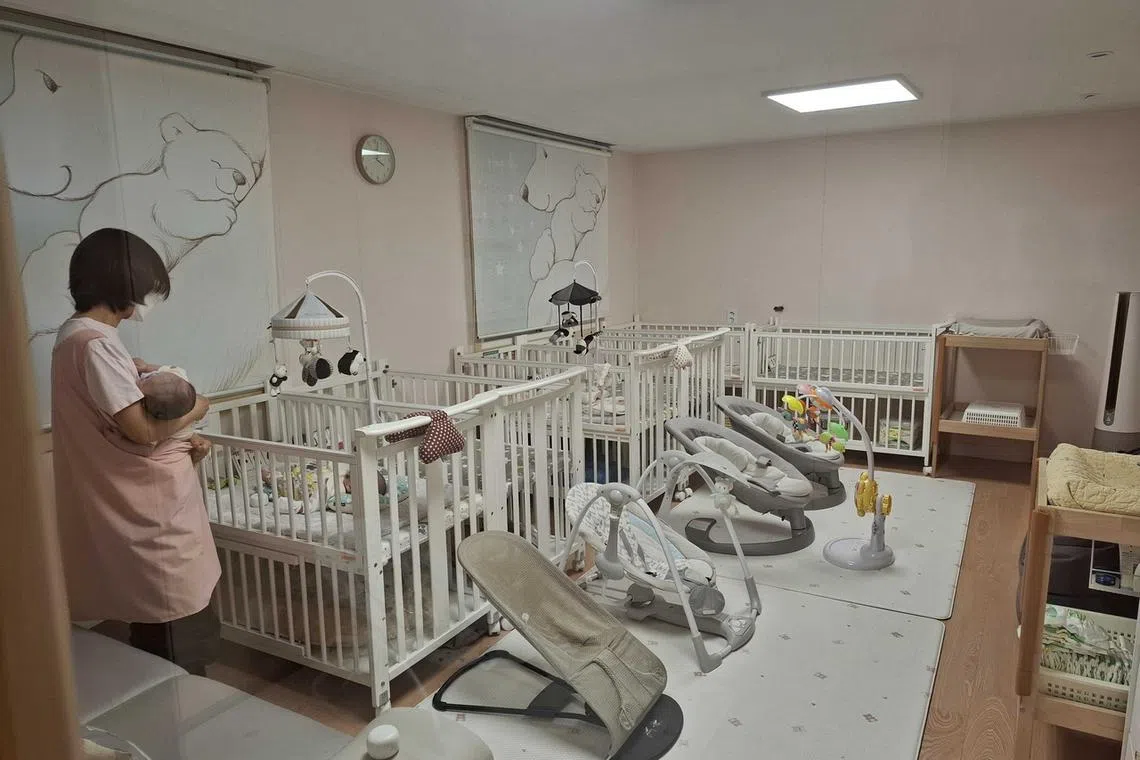
Caregivers are stationed at Babybox Korea's care room 24 hours a day to look after the babies.
PHOTO: THE KOREA HERALD/ASIA NEWS NETWORK
Follow topic:
SEOUL – “I just gave birth to a baby,” said a woman over the phone as Ms Hwang Min-sook was about to leave work one winter day.
Ms Hwang urged her to call 119, the medical emergency hotline, but she replied: “I can’t do that.” Ms Hwang told her to take a taxi and see her at Babybox Korea in Gwanak-gu, Seoul.
A few hours later, the woman arrived with her newborn. The staff suggested she stay overnight and go to the hospital the next morning, but she insisted on leaving and did not take her baby.
She said she had to clean up the blood and other signs of childbirth before vacating a rented room the next day.
A month later, she called again. She explained that the room was in a redevelopment area where residents had moved out. It was dusty and had no electricity, and she temporarily borrowed the space to give birth.
It was then that Ms Hwang understood what might have caused the newborn’s infection.
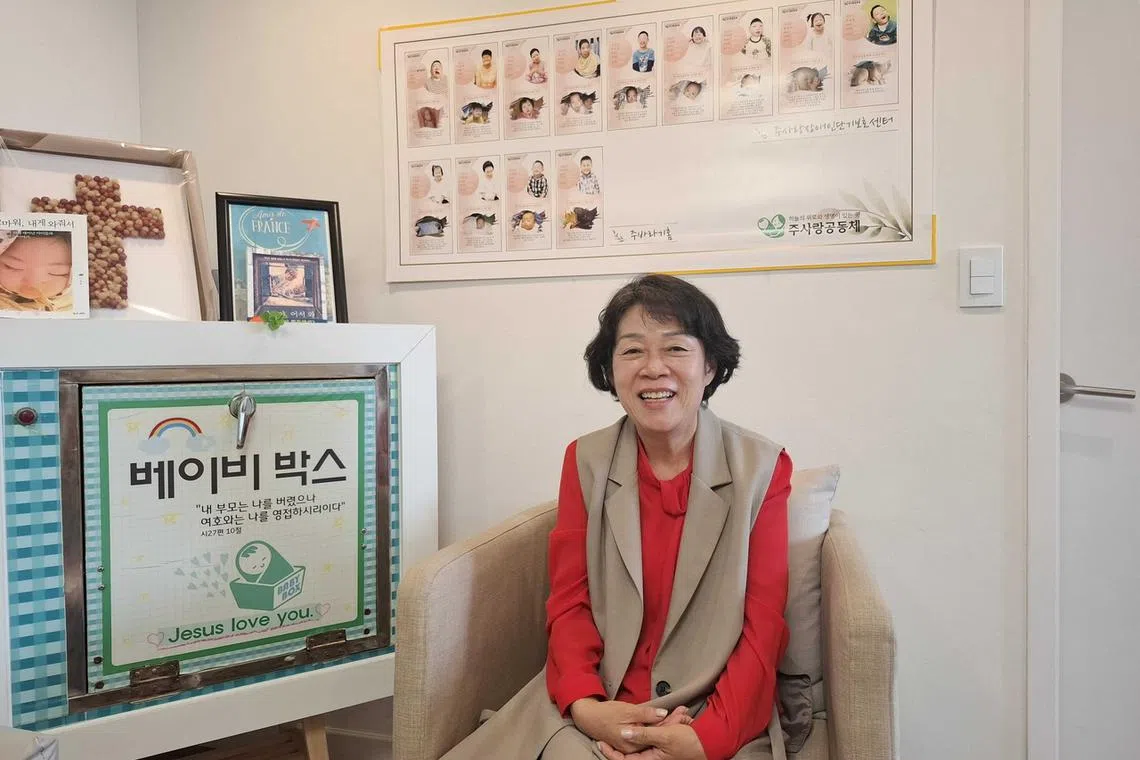
Babybox Korea’s managing director Hwang Min-sook poses for a photograph after an interview.
PHOTO: THE KOREA HERALD/ASIA NEWS NETWORK
After that call, the mother never made contact again. Once the infant’s health was restored, the baby was transferred to a child welfare centre.
Not everyone can imagine what that mother went through. But Ms Hwang said: “There are many who give birth alone and abandon their babies. The baby box is their last refuge.”
What is a baby box?
A baby box is a facility that allows mothers to safely leave their babies in a protected environment.
There are currently two such facilities in South Korea. The one in front of Jusarang Church, which operates Babybox Korea, is the first of its kind.
The baby box was started by the church’s pastor Lee Jong-rak. One winter night in 2007, he received a phone call at around 3am. A man said he left a baby in front of the church.
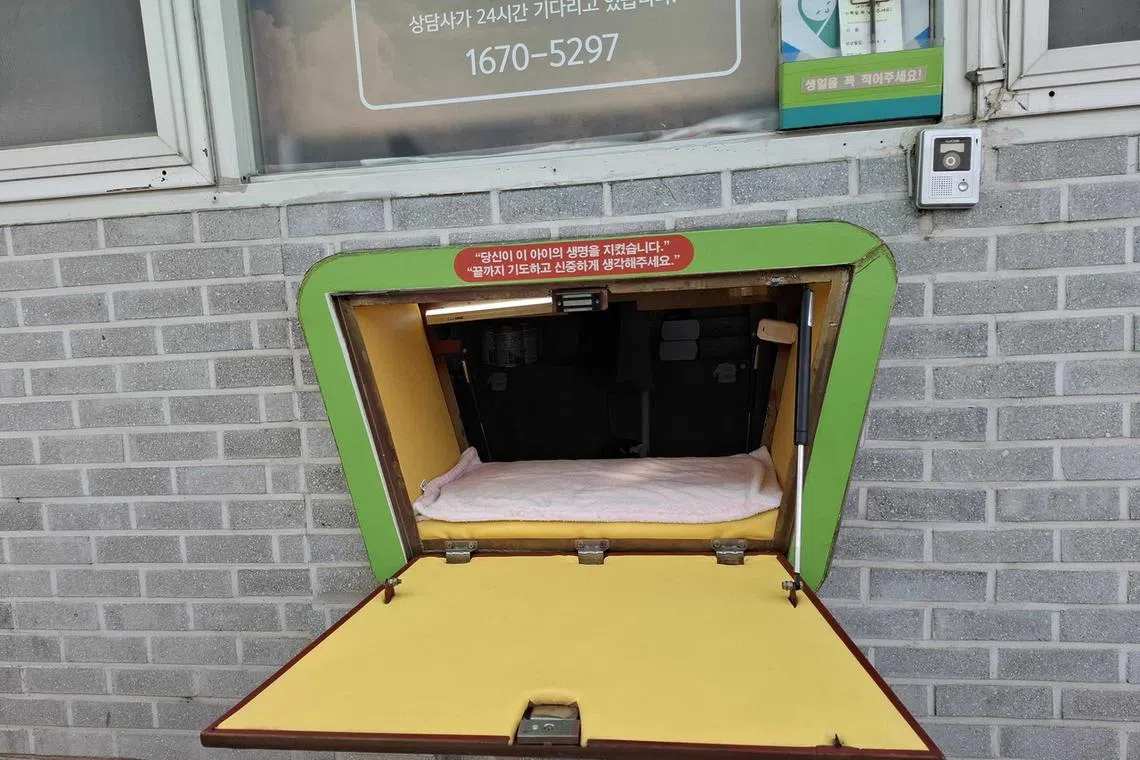
The baby box is installed in front of Jusarang Church, which operates Babybox Korea. Once a baby is placed inside, an alarm alerts the staff, who transfer the infant to a care room.
PHOTO: THE KOREA HERALD/ASIA NEWS NETWORK
Mr Lee rushed outside and found a baby with Down syndrome lying in a smelly fish box. Word spread that he was caring for a child with disabilities, and soon more babies with various conditions began appearing in front of the church overnight.
Fearing that one might die in the cold, he built a box where parents could safely leave their babies.
The box was later upgraded with a sensor that triggers an alarm when a baby is placed inside. Staff, working around the clock in shifts, respond immediately. When possible, they offer counselling to the mothers too.
The concept is not unique to South Korea. Baby boxes – under the same or different name – exist in at least 20 countries, including the United States, Germany, the Czech Republic, Poland and Japan.
In South Korea, in May 2014, a baby box was installed at New Canaan Church in Gunpo, Gyeonggi province.
Since pastor Lee installed the baby box outside his church, 2,181 babies have been surrendered as of March 2025.
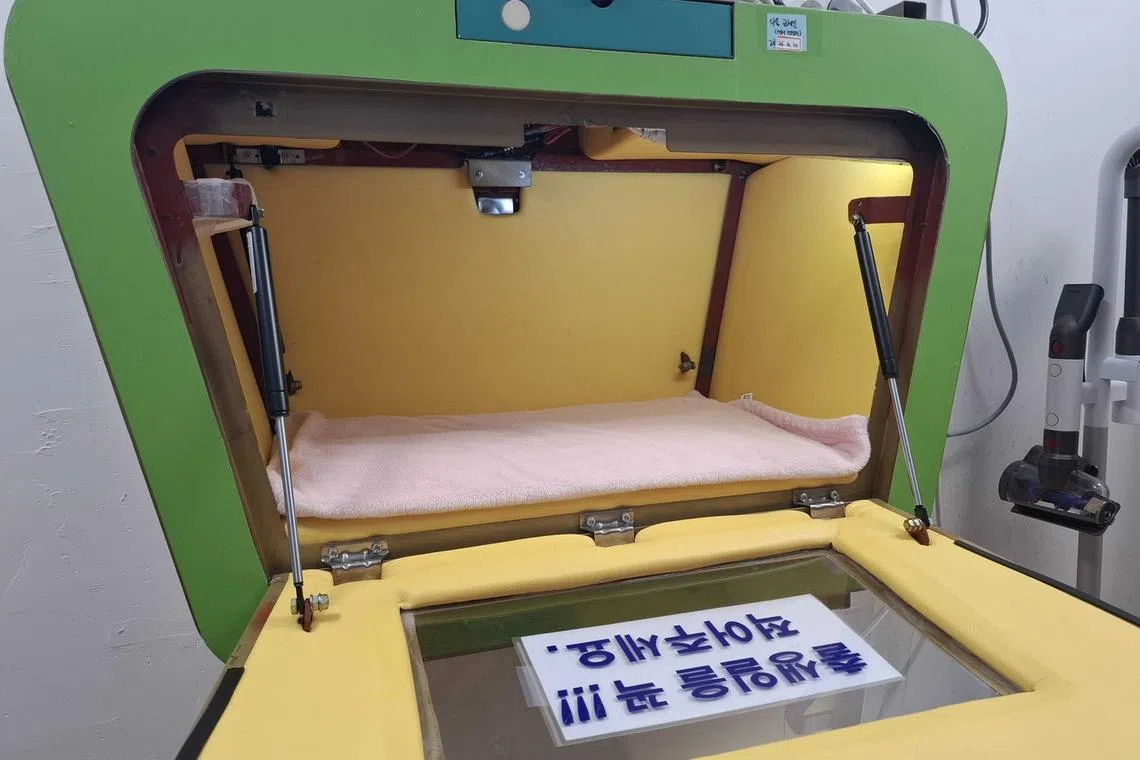
This baby box, operated by Babybox Korea, has a notice with three exclamation points reading “Please write down the baby’s birthday”.
PHOTO: THE KOREA HERALD/ASIA NEWS NETWORK
When a baby arrives, the staff at the facility care for the child for up to six months, until the local authorities determine their future. Of the 2,181 babies, 1,693 have been sent to childcare centres, 167 have been adopted and 311 have been returned to their mothers. In the remaining 10 cases, records are unavailable.
Ms Hwang said when the alarm goes off, the centre typically brings the mother inside for counselling and offers any support she might need.
“The main goal of counselling is to encourage mothers to raise their babies themselves,” she added, noting that the centre provides support for three years, including baby kits, medical costs, legal and housing assistance, and living expenses. All of this is funded by donations.
“The saddest thing is when mothers disappear or don’t give up custody. If mothers don’t relinquish custody, the babies cannot be adopted and must remain in childcare centres,” she said.
What drives baby abandonment?
The number of infants left at the baby box has fluctuated in step with changes to local laws and policies on adoption and support for single mothers with unplanned pregnancies.
Arrivals to the baby box have surged since 2012 when the Act on Special Cases Concerning Adoption took effect, making it illegal to put a child up for adoption without first registering the birth. This made it difficult to give up babies for adoption anonymously.
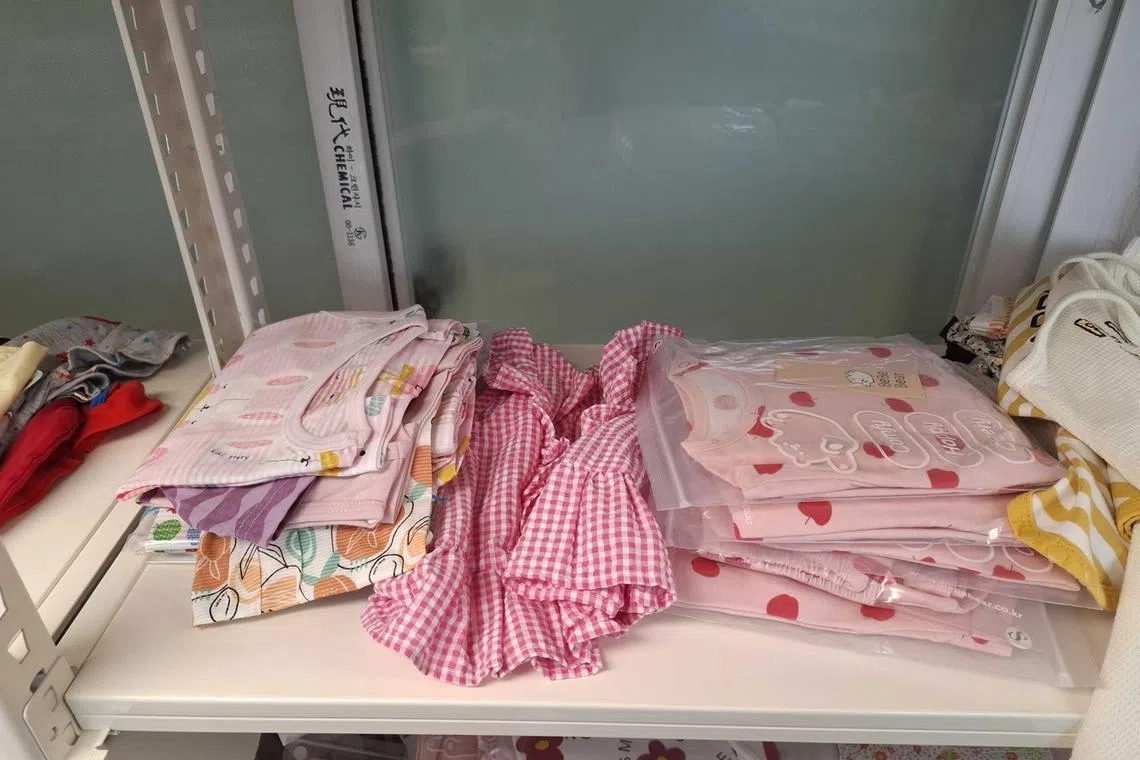
Clothes donated for the babies are neatly arranged at Babybox Korea.
PHOTO: THE KOREA HERALD/ASIA NEWS NETWORK
The number began to decline after 2019, when the Constitutional Court ruled the abortion ban unconstitutional. While the procedure was no longer prohibited, it had not yet been fully legalised. Still, abortions remained available in hospitals, allowing more women with unplanned pregnancies to choose termination.
Another major change came in 2024 with the implementation of the anonymous birth system, which allows women to give birth in hospitals without revealing their identity.
Still, Babybox Korea saw the arrival of 58 babies in 2024.
According to Ms Hwang, despite changes in policies and support systems, one powerful force remains unchanged: the social stigma surrounding single motherhood.
Parents with higher levels of education are more likely to oppose their daughters giving birth outside of marriage, fearing it could damage the family’s reputation and social standing.
Addressing criticism that the baby box makes it too easy for mothers to surrender their babies, she added: “For the mothers who come here, this is the last resort. They come from all over the country, simply trying to save their babies by any means.”
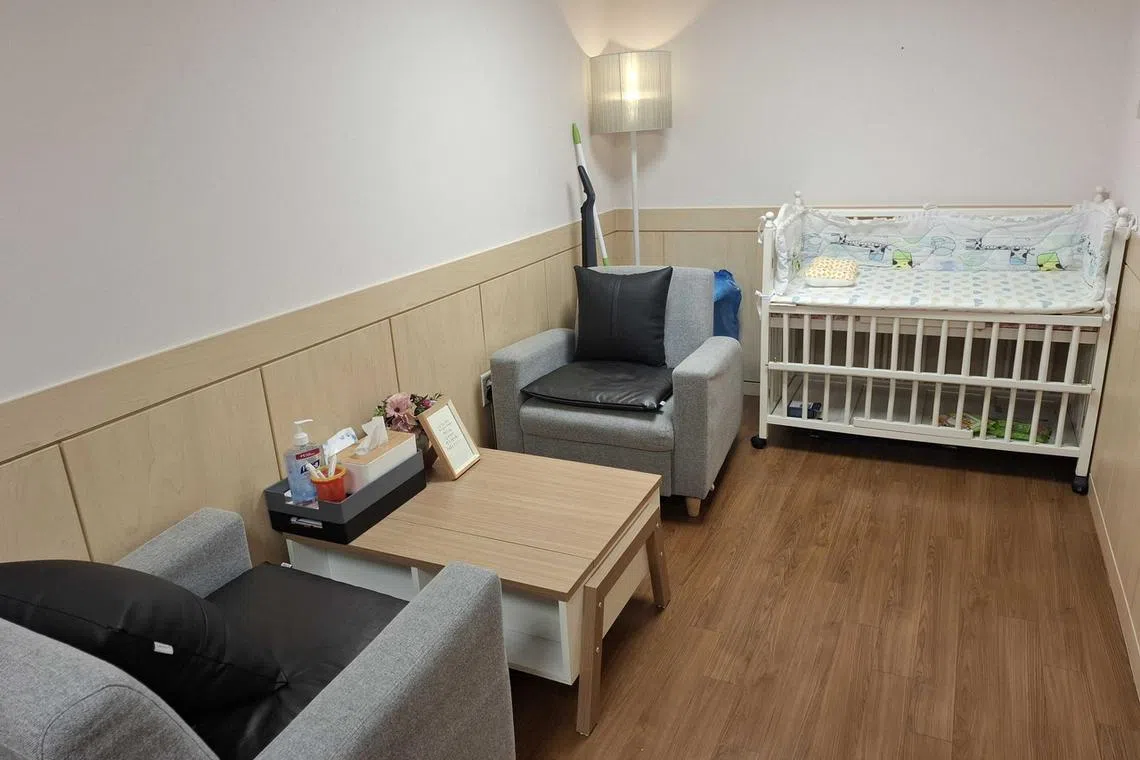
About 13 per cent of the mothers who sought help from the centre gave birth outside of hospitals.
PHOTO: THE KOREA HERALD/ASIA NEWS NETWORK
Indicative of the desperation many of these women face, she added that about 13 per cent of the mothers who sought help from the centre had given birth outside of hospitals, something almost unthinkable in South Korea today.
Government support for single mothers exists. There are state-run shelters where single mothers or expecting mothers can stay. Counselling services and food assistance are also offered. But Ms Hwang believes it is far from sufficient.
According to the findings of a survey released by the Welfare Ministry in 2023, 249 babies born between 2015 and 2022 died without ever being officially registered.
“When mothers talk to our counsellors about entrusting their babies to us, they cry their eyes out. When adoption is decided, they write letters to their babies. Many wrote: ‘I wanted to raise you but I’m sorry. I was happy for a few days because of you,’” she noted. THE KOREA HERALD/ASIA NEWS NETWORK

